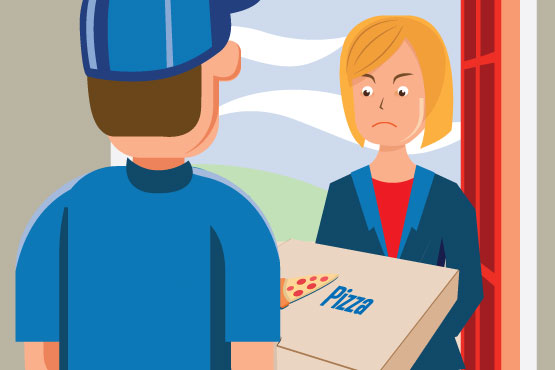Offering a food delivery service, whether through third-party apps or in-house, might seem like enough to satisfy your customers. However, a poorly executed delivery service can often do more harm than good, damaging your restaurant’s reputation. But what exactly makes for a bad delivery experience? While a variety of issues can arise, three common problems tend to have the most significant impact on customer satisfaction—and can make or break your entire delivery operation.
1. Missing Items
When customers place an order, they expect to receive everything they’ve paid for. Unfortunately, it's all too common for orders to arrive with missing drinks, sides, the main dish. This can happen for several reasons, with poor oversight being one of the most frequent culprits. If there isn’t a system in place to double-check orders before they’re handed off to drivers, mistakes are bound to happen.
There’s another, less talked-about issue: drivers snacking on the food during transit. Shockingly, around 30% of drivers admit to eating a customer’s food en route.
Solution: Delivery Dispatch Checklist & Tamper-Proof Packaging
Assign someone the responsibility of conducting a final check on every order before it leaves the restaurant. This simple step can prevent many packing errors. Additionally, having a seamless system where third-party orders are directly integrated into your POS, rather than manually entered from a separate device, can significantly reduce human error.
With SpeedLine our dispatch screen has a column that will say the number of sides that should be part of the order to help combat this issue,
To combat drivers snacking on the food during transit, use tamper-proof packaging. Sealing bags or containers with stickers ensures that food hasn’t been touched once it leaves the restaurant, giving customers peace of mind.
2. Slow Delivery Times
No matter how delicious your food is, few people are willing to wait more than 40 minutes for it to arrive. In fact, only about a third of customers are okay with waiting longer than that. Slow delivery times can quickly turn what was a positive dining experience into a unwanted frustrating one.
Solution: Speed Up and Streamline
There are several ways to improve your delivery times. You can start by using a visual dispatch system, which allows you to group orders together and send them out more efficiently, minimizing the time drivers spend on the road. Another way you can improve your time is using color-coded indicators which can help you track when orders are falling behind, allowing you to prioritize them accordingly and keep customers happy and informed about their estimated arrival time.
Setting realistic delivery zones is also key. For example, an order going to someone five miles away will naturally take longer to deliver than an order headed to a nearby location. Avoid giving vague time windows like “35-50 minutes,” as customers tend to expect the shorter end of the estimate. If your POS system allows for it, customize delivery times based on distance and current traffic conditions to provide more accurate estimates which can be done through SpeedLine LiveMaps.
When you’ve optimized your delivery process as much as possible, the next step is to manage customer expectations. Clearly communicating realistic delivery times helps prevent frustration, as customers are more likely to appreciate timely updates and can plan around their delivery. Need extra delivery support? With SpeedLine you can summon a DoorDash driver directly from the dispatch screen to deliver orders when an in-house driver is not available. This feature ensures your customers receive their orders on time, even during peak hours.
3. Incorrect Online Menus
Few things are more frustrating for customers than navigating an online menu only to find out that an item is out of stock, unavailable, or incorrectly priced. These issues can lead to disappointed customers and lost sales which can hurt a business in the long run with longterm loyal customers.
Solution: Automate Menu Updates
Using a POS system that automates menu management can help keep things accurate and up-to-date. Whether you’re managing one location or several, the right system will ensure that menus reflect what’s currently available, syncing prices and inventory in real-time. This way, your customers won’t be caught off guard by unavailable items or pricing discrepancies.
Outcomes: Helping Over Come These Challenges
Incorporating these solutions can help you overcome the challenges of missing items, long delivery times, and inaccurate online menus. By focusing on these key areas, you’ll not only improve the efficiency of your delivery service but also enhance the overall customer experience—turning delivery into a consistent and positive part of your restaurant’s offering.
Posted on Wed, Oct 16, 2024 @ 09:10 AM.
Updated on October 16, 2024 @ 4:00 PM PST.


